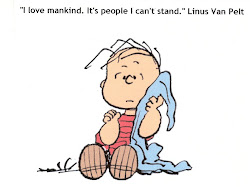The Big Roads: The Untold Story of the Engineers, Visionaries, and Trailblazers Who Created the American Superhighways.
I’ve written previous regarding interstate highways, the road trip experience, and small towns. So when I saw Earl Swift’s book in the recently received section of our library, I had to take it out, even though my reading table is already piled high.
The Big Roads starts at the beginning of cross country road concepts in the US, with the first gas or steam-driven carriages. The book is written from an engineer’s point of view, so it goes into a lot of minutiae that even I’m not too interested in, but overall it’s a decent read. One interesting myth that Swift quickly dispels (that I always believed) is that President Eisenhower was the driving force in getting the country behind building the massive interstate highway system we know today. Supposedly he patterned his ideas after the great German autobahns that he experienced in WWII and believed this country sorely needed to be able to move massive amounts of military troops and equipment in defense of the country. Those were reasonable considerations, but in fact the overall design and concepts for our interstate system were hatched in the 1930s and were much better thought out than Eisenhower’s own plans. Eisenhower assumed that interstate corridors needed to run through the countryside, avoiding major cities. Professional planners realized early on that the interstates needed to help relieve traffic pressure on the cities, not the sparsely populated Nebraska plains. Surprisingly, Eisenhower was not one to get involved with details of any federal initiatives and the construction of the interstate system was well underway before he actually came to realize that what was being constructed was not his plans!
But the parts of Swift’s book that most interest me is the launch of a new era in the US as far as personal mobility. Swift states:
No surprise, then, that the new highways couldn’t come fast enough. Americans loved everything about their cars, loved driving, loved that they could follow an impulse to go wherever they chose, without a thought to routes or timetables. They loved that they lorded over their surroundings while they did it. They were cocooned, protected from the world, even as they were free to explore it. They could ride in silence or with the radio blaring, need never surrender personal space to a sweaty, foul-mouthed stranger, need not suffer inane chatter.
What wasn’t to love about the car? Americans took to it not only willingly, but with gusto. They did not have an automotive life foisted on them …. The people chose their path. They wanted what they were getting. Now they wanted the barriers to their automotive pleasure lowered. They wanted interstates, and damn it, they wanted them pronto.
Road trip??




1 comment:
I got this book out of the library earlier this summer. One of the fascinating observations he made in the introduction was the road trip he took with his daughter. When he drove the secondary roads driving west, he learned more about the country than the return trip east when he stayed on the interstates. The interstates connect the country but do little to connect us with where we have driven.
Post a Comment